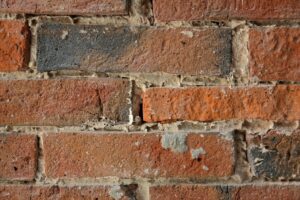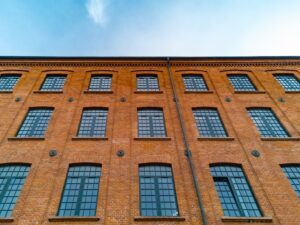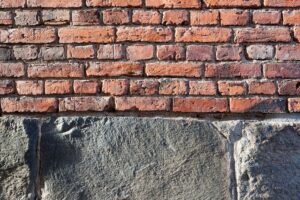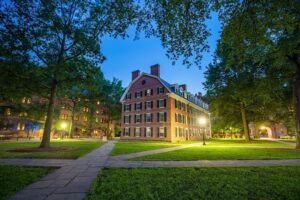Category: Masonry Services
An Expert’s Assessment – Masonry and Concrete Restoration in Connecticut

Restoring masonry is not a task to be left to just any builder or handyman. An expert assessment of masonry and concrete restoration Connecticut contractor would consider several key factors unique to the region:
Historical Significance
Connecticut is rich in historical architecture, with many buildings dating back centuries. An expert assessment would recognize the importance of preserving and restoring these historic structures using appropriate techniques and materials to maintain their authenticity and cultural significance.
Climate Challenges
Connecticut experiences a range of weather conditions throughout the year, including cold winters, hot summers, and frequent precipitation. These climate challenges can impact the durability and integrity of masonry and concrete structures, making proper restoration techniques essential to withstand weathering and freeze-thaw cycles.
Salt Damage
Coastal areas of Connecticut may be prone to salt damage from ocean spray and deicing salts used on roads during the winter. This can accelerate deterioration of masonry and concrete surfaces, requiring specialized restoration techniques to repair and protect against further damage.
Historic Preservation Guidelines
Connecticut has stringent historic preservation guidelines and regulations to protect its historic architecture. An expert assessment would ensure that restoration projects comply with these regulations while still meeting modern performance standards and building codes.
Environmental Considerations
Connecticut’s natural environment, including its proximity to the Long Island Sound and various rivers, may pose environmental challenges for masonry and concrete restoration. Contractors must consider factors such as moisture infiltration, mold growth, and environmental pollutants when assessing restoration needs.
Masonry Restoration Essentials – Tackling Less Understood Challenges

Masonry restoration involves preserving and repairing aging masonry structures, such as buildings or walls. While some aspects of masonry restoration are well understood, there are several less-understood challenges that contractors may encounter.
Here are some essential considerations for tackling these challenges:
Historical Preservation
When restoring historic masonry structures, it’s crucial to adhere to preservation guidelines and regulations to maintain the building’s historical integrity. Contractors must research the structure’s history, materials, and construction methods to ensure authenticity and compliance with preservation standards.
Material Compatibility
Choosing compatible materials for masonry restoration is essential to prevent damage and deterioration. Contractors need to consider factors such as the original materials used, environmental conditions, and the compatibility of new and existing materials to ensure a durable and long-lasting restoration.
Structural Stability
Assessing the structural stability of masonry structures is a complex task that requires expertise and experience. Contractors must identify and address issues such as cracks, bulges, leaning walls, or foundation problems to prevent structural failure and ensure the safety of the building.
Moisture Management
Moisture infiltration is a common problem in masonry structures that can lead to deterioration, mold growth, and other issues. Contractors must implement effective moisture management strategies, such as proper drainage, waterproofing, and ventilation, to protect the masonry from water damage.
Matching Aesthetics
Achieving a seamless aesthetic match between new and existing masonry materials can be challenging, especially with aged or weathered structures. Contractors may need to use specialized techniques, such as tinting, staining, or aging treatments, to blend new materials with the existing masonry and achieve a cohesive appearance.
Calling on Connecticut Masonry Experts for Fine Finishing Jobs

In the picturesque landscapes of Connecticut, masonry is not just a construction practice; it is a craft that marries functionality with aesthetic finesse. When it comes to fine finishing jobs, local Connecticut masonry experts are the artisans who elevate structures to timeless works of art.
Learn more about the expertise behind their meticulous finishing touches.
Precision in pointing
Connecticut masonry experts take pride in the precision of their pointing techniques, ensuring mortar joints seamlessly blend with the surface. This meticulous detailing not only enhances the structural integrity of brick and stone constructions but also contributes to a polished and refined appearance.
Artistry in restoration
Masonry restoration in Connecticut is an artful endeavor that harmonizes historical preservation with contemporary precision. Experts delicately restore historic landmarks and residential facades, breathing new life into aged structures while maintaining their original charm.
Creative customization
A hallmark of Connecticut masonry lies in creative customization, where experts bring unique visions to life. From personalized fireplaces to intricately designed pathways, these artisans turn each project into a bespoke masterpiece, reflecting the client’s distinct style.
Durability and weather resistance
Beyond aesthetics, Connecticut masonry experts prioritize materials and techniques that withstand the test of time and weather. The focus on durability ensures that their creations not only captivate the eye but also endure the ever-changing seasons, providing lasting value to property owners.
What Makes Masonry Restoration a Real Challenge?

Like unraveling a historical tapestry, Masonry restoration poses a unique set of challenges. Historical structures bearing the scars and stories of bygone eras demand a meticulous touch to revive their architectural glory. What makes this endeavor particularly challenging?
Material mosaic
Historic masonry boasts a rich range of materials – bricks, stones, mortar, etc. – each with its aging journey. The restoration challenge lies in sourcing materials harmonizing with the original in composition and visual appeal.
Skilled artisans must meticulously recreate intricate details and textures to seamlessly blend new additions with the existing masonry, ensuring a restoration that mirrors the authenticity of the past.
Weathering the elements
Time, weather, and environmental factors conspire to wear down historic structures. Restoration efforts must address existing damage while implementing preventive measures to shield against future onslaughts.
Expertise beyond the surface
Masonry restoration transcends surface level repairs, an art that demands a fusion of knowledge and craftsmanship. The integration of modern structural standards with historical architecture requires a delicate touch. Ensuring stability while preserving the soul of the structure demands a unique expertise.
The challenge extends beyond bricks and mortar to the philosophical debate of preservation versus modernization. Striking a balance between honoring history and meeting contemporary needs is a nuanced decision.
Advanced Practices for Connecticut Masonry Work

Masonry work in Connecticut requires attention to local climate conditions, building codes, and industry best practices. Here are some advanced practices specific to masonry work in Connecticut:
Material Selection
Choose materials that are well-suited to Connecticut’s climate. Given the region’s cold winters and potential for freeze-thaw cycles, select durable and weather-resistant materials for masonry construction.
Insulation Considerations
Incorporate proper insulation into masonry projects, especially for exterior walls. This is essential for energy efficiency and to prevent issues related to thermal bridging. Consult local building codes to ensure compliance.
Expansion Joints
Include expansion joints in large masonry structures to accommodate thermal movement and prevent cracking. Properly placed expansion joints help ensure the longevity and stability of the masonry work.
Historical Restoration Techniques
Connecticut has a rich history, and many buildings may require historical restoration. Hire masonry contractors specializing in historical building restoration to preserve the authenticity of older structures while ensuring they meet modern safety and code standards.
High-Strength Mortars
Depending on the application, consider using high-strength mortars that are designed to withstand specific loads or environmental conditions. This is particularly relevant for projects with demanding structural requirements.
Efflorescence Prevention
Employ advanced techniques to prevent efflorescence, a common issue in masonry where white, powdery deposits form on the surface. This may include proper curing, sealing, and selecting low-alkali cement.

















